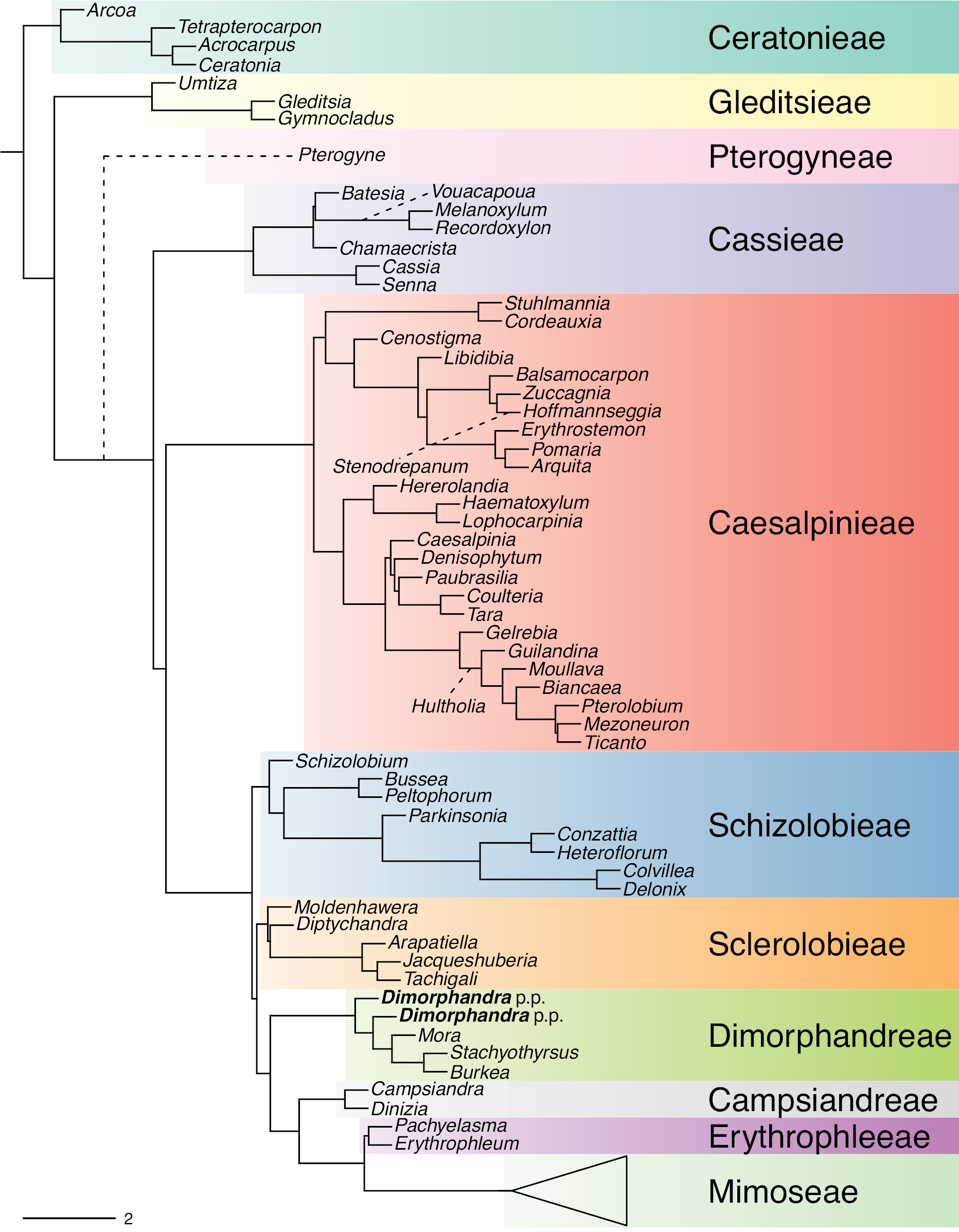
|
||
|
Phylogeny of Caesalpinioideae showing the tribal classification presented here. The names and phylogenetic placements of all 63 non-Mimoseae Caesalpinioideae genera are shown and known generic non-monophyly is indicated with terminal names of non-monophyletic genus in bold. The most likely placements for four unsampled genera are indicated with dashed lines; see respective treatments for details. Tribe Mimoseae has been collapsed (see Fig. 5). Branch lengths are expressed in coalescent units, and terminal branch lengths have been assigned an arbitrary uniform length for visual clarity. Monophyletic genera are represented by single branches; see Suppl. material 2 for a phylogeny with all accessions. See Suppl. material 3 for gene tree support across the phylogeny. The phylogeny is a pruned version of the backbone phylogeny of Ringelberg et al. (2023), where full details of the data and phylogenomic analysis methods are presented. |